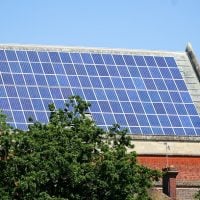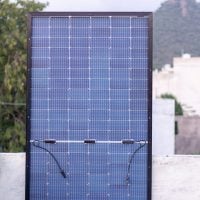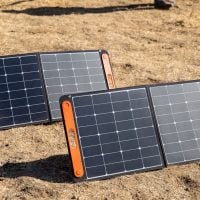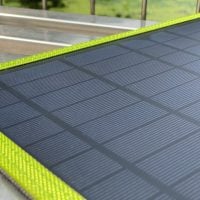In the realm of non-profit organizations, particularly those focused on renewable energy, a well-structured fundraising strategy is not just beneficial; it is essential. Solar projects often require significant upfront investment, and without a clear plan for securing funds, even the most innovative ideas can falter. A comprehensive fundraising strategy serves as a roadmap, guiding organizations through the complexities of financial support while ensuring that they remain aligned with their mission and objectives.
It helps to identify potential funding sources, articulate the project’s value, and engage stakeholders effectively. Moreover, a solid fundraising strategy can enhance credibility and attract more substantial investments. When potential donors see that an organization has a clear plan for how funds will be utilized, they are more likely to contribute.
This strategy also allows organizations to communicate their vision and impact more effectively, fostering trust and transparency. In an era where sustainability is increasingly prioritized, having a robust fundraising strategy can position solar projects as viable solutions to pressing energy challenges, thereby attracting both philanthropic and commercial interest. Are You Working on Solar Innovation or Clean Energy Access? Join us to receive updates.
Identifying the Goals and Objectives of the Solar Project
Before embarking on any fundraising journey, it is crucial to define the goals and objectives of the solar project clearly. These goals should be specific, measurable, achievable, relevant, and time-bound (SMART). For instance, if the objective is to install solar panels in a community, it is essential to specify how many panels will be installed, the timeline for installation, and the expected impact on energy costs for residents.
By establishing clear objectives, organizations can create a compelling narrative that resonates with potential donors. Additionally, understanding the broader impact of the solar project can help in articulating its significance. For example, if the project aims to reduce carbon emissions or provide energy access to underserved communities, these outcomes should be highlighted in fundraising materials.
By connecting the project’s goals to larger environmental or social issues, organizations can appeal to a wider audience of potential supporters who are passionate about sustainability and social justice.
Researching Potential Funding Sources for Solar Projects
Identifying potential funding sources is a critical step in developing a successful fundraising strategy for solar projects. This process involves extensive research to uncover various funding opportunities, including grants from government agencies, private foundations, corporate sponsorships, and crowdfunding platforms. Each funding source has its own set of criteria and application processes, so understanding these nuances is vital for success.
For instance, government grants often have specific eligibility requirements and deadlines that must be adhered to. Organizations should familiarize themselves with local, state, and federal programs that support renewable energy initiatives. Similarly, private foundations may focus on specific areas of interest, such as environmental conservation or community development.
By aligning the solar project’s goals with the interests of potential funders, organizations can increase their chances of securing financial support.
Developing a Comprehensive Budget for the Solar Project
A comprehensive budget is a cornerstone of any successful fundraising strategy. It provides a detailed breakdown of all costs associated with the solar project, including equipment purchases, installation expenses, maintenance costs, and administrative overhead. By presenting a clear and realistic budget to potential donors, organizations can demonstrate their commitment to transparency and accountability.
Moreover, a well-structured budget allows organizations to identify funding gaps and prioritize their fundraising efforts accordingly. For example, if installation costs are significantly higher than anticipated, organizations may need to focus on securing additional funding specifically for that aspect of the project. Additionally, including projections for long-term savings or revenue generation from the solar project can further entice potential investors by showcasing the project’s financial viability.
Creating a Compelling Case for Support for the Solar Project
Crafting a compelling case for support is essential in persuading potential donors to invest in a solar project. This case should articulate not only the project’s goals and objectives but also its broader impact on the community and environment. Storytelling plays a crucial role in this process; sharing personal stories from community members who will benefit from the project can create an emotional connection that resonates with potential supporters.
In addition to personal narratives, data and statistics can bolster the case for support. For example, presenting information about the environmental benefits of solar energy or the economic advantages of reducing energy costs can provide a strong rationale for investment. By combining emotional appeal with factual evidence, organizations can create a persuasive case that encourages donors to contribute to the solar project.
Building Relationships with Potential Donors and Investors
Building relationships with potential donors and investors is a fundamental aspect of successful fundraising. This process involves not only reaching out to individuals or organizations that align with the project’s mission but also nurturing those relationships over time. Regular communication is key; keeping potential supporters informed about project developments and successes can foster trust and engagement.
Networking events, informational sessions, and one-on-one meetings can provide opportunities to connect with potential donors personally. During these interactions, it is essential to listen actively to their interests and concerns while articulating how their support can make a difference. By cultivating genuine relationships based on mutual respect and shared values, organizations can create a network of advocates who are invested in the success of the solar project.
Leveraging Technology and Social Media for Fundraising Efforts
In today’s digital age, leveraging technology and social media is crucial for effective fundraising efforts. Online platforms provide organizations with tools to reach a broader audience and engage potential donors in innovative ways. For instance, crowdfunding platforms allow organizations to showcase their solar projects and invite contributions from individuals who may not have been reached through traditional fundraising methods.
Social media channels such as Facebook, Twitter, and Instagram can also be powerful tools for raising awareness about solar projects. By sharing updates, success stories, and engaging content related to renewable energy, organizations can build an online community of supporters who are passionate about sustainability. Additionally, utilizing email marketing campaigns can help keep supporters informed about fundraising goals and upcoming events while encouraging them to share information within their networks.
Crafting a Diverse Fundraising Plan for the Solar Project
A diverse fundraising plan is essential for ensuring the long-term sustainability of solar projects. Relying on a single funding source can be risky; therefore, organizations should explore multiple avenues for financial support. This may include grants from various foundations, corporate sponsorships, individual donations, and revenue generated from selling excess energy back to the grid.
In addition to diversifying funding sources, organizations should consider implementing various fundraising strategies tailored to different audiences. For example, hosting community events or workshops can engage local supporters while online campaigns may attract younger donors who prefer digital engagement. By crafting a multifaceted fundraising plan that encompasses various strategies and sources of support, organizations can enhance their resilience and adaptability in an ever-changing funding landscape.
Implementing Effective Fundraising Campaigns and Events
Once a comprehensive fundraising plan is in place, it is time to implement effective campaigns and events that align with the solar project’s goals. These initiatives should be designed not only to raise funds but also to engage supporters and raise awareness about renewable energy issues. For example, organizing community events such as solar fairs or educational workshops can provide opportunities for individuals to learn more about solar energy while contributing financially.
Additionally, leveraging partnerships with local businesses or organizations can amplify fundraising efforts. Collaborating on events or campaigns can expand reach and attract new supporters who may not have been previously engaged with the organization. By creating memorable experiences that resonate with participants while promoting the solar project’s mission, organizations can foster lasting connections that extend beyond individual donations.
Tracking and Evaluating the Success of the Fundraising Strategy
Tracking and evaluating the success of fundraising efforts is crucial for continuous improvement. Organizations should establish key performance indicators (KPIs) that align with their fundraising goals—such as total funds raised, donor retention rates, or engagement levels during campaigns. Regularly assessing these metrics allows organizations to identify what strategies are working well and where adjustments may be needed.
Moreover, gathering feedback from donors and supporters can provide valuable insights into their experiences and motivations for contributing. This information can inform future fundraising strategies and help organizations refine their messaging or approach based on donor preferences. By fostering a culture of evaluation and learning within the organization, teams can enhance their effectiveness in securing funds for solar projects over time.
Adapting and Adjusting the Fundraising Strategy as Needed
The landscape of fundraising is dynamic; therefore, organizations must remain flexible in adapting their strategies as needed. Economic conditions, donor preferences, or emerging trends in renewable energy can all influence fundraising success. Regularly reviewing the effectiveness of current strategies allows organizations to pivot when necessary—whether that means exploring new funding sources or adjusting campaign messaging.
Additionally, staying informed about industry developments can provide insights into potential opportunities or challenges that may arise in securing funding for solar projects. Engaging with other non-profits or industry experts through networking events or conferences can facilitate knowledge sharing and collaboration on best practices in fundraising. By embracing adaptability as a core principle of their fundraising strategy, organizations can position themselves for long-term success in advancing their solar initiatives.
In conclusion, developing an effective fundraising strategy for solar projects requires careful planning and execution across multiple dimensions—from identifying goals to building relationships with donors. By employing actionable tips and real-world examples throughout this process, NGO professionals can enhance their ability to secure funding while making meaningful contributions toward sustainable energy solutions.
When developing a fundraising strategy for solar projects, it’s essential to explore various funding opportunities that align with your project’s goals. One such opportunity is the EQT Foundation’s Breakthrough Science Grant Program 2024, which supports innovative projects with a focus on scientific advancement and sustainability. This grant could be a valuable resource for solar initiatives seeking financial backing to drive their projects forward. For more information on this grant program, you can visit the EQT Foundation’s Breakthrough Science Grant Program 2024 page.









































